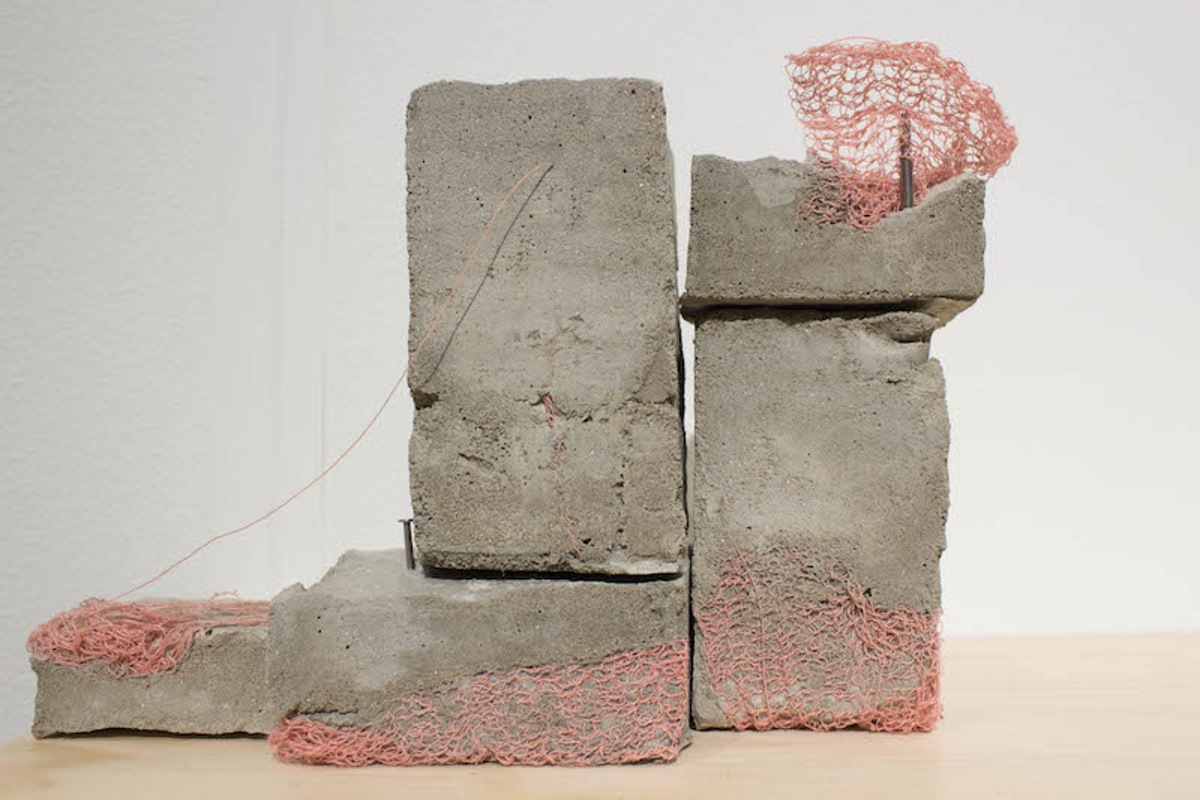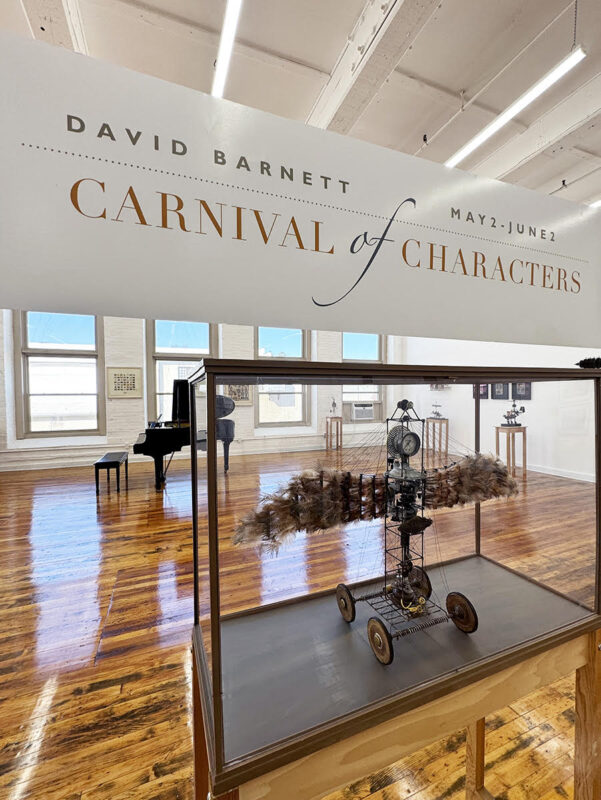Terence Hannum Interviews Emily Larned, Co-Operator and Local 917 Shop RC of Impractical Labor in the Service of Speculative Arts.
Give us a brief history of Impractical Labor in the Service of Speculative Arts (ILSSA). When did you form? When did you begin publishing books and making editions? Where are you based and what would you say are your guiding principles to making your publications and limited editions?
Bridget Elmer and I established ILSSA eight years ago, in 2008. ILSSA is a platform for both socially engaged art and publishing. ILSSA takes shape as a membership organization for those who use obsolete technology in conceptual or experimental ways. It is organized as a Union and a Research Institute, with the Union fostering solidarity through organizing events and opportunities for the membership, and the Research Institute publishing original material of interest to members as well as the general public. Since Bridget and I both came to ILSSA as bookmakers, our first activity as ILSSA was publishing.
We see our publications as tools for the membership to reflect upon their process, and also to document the activities of the organization. Currently, together with Local 503 Shop JL John Labovitz, we’re working on a self-test for ILSSA members to track and analyze their experience of time. Our culture often sees time as interchangeable, but we’ve noticed ourselves that certain times of day are more valuable than others. Can you organize your life such that you save your best time — the time you feel most creative, the greatest clarity — for the activities most valuable to you, and not squander them on running errands or answering perfunctory emails?
ILSSA publications vary widely and have included: letterpress printed essays; a letterpress printed survey, The State of the ILSSA Union, asking members to self-report their working conditions as artists; a folder of materials documenting the first ILSSA members’ meeting, which doubled as an exhibition at The Center for Craft, Creativity, & Design (NC); a 28-prompt workbook asking members to reflect upon time (a persistent theme!) for an exhibition at Colorado College; a call-and-response for individual members’ manifestos; the ILSSA Reference Collection: An Analogue Internet Project.
Bridget lives in St. Petersburg, FL and I’m in Bridgeport, CT. We first met in NYC in the early 2000s but both left the city by 2005, so ILSSA has always been a long distance collaboration. In fact, being apart is one of the factors that inspired its founding in the first place: by creating ILSSA we had an ongoing structure that required us to stay in close contact.
Our guiding principle to making editions: to create beautiful, thoughtful publications that invite use and reflection. Our official motto: As Many Hours As It Takes!
 The ILSSA It’s About Time Workbook. This letterpress printed, 28-prompt workbook was sent to all members in January 2014. Members had the month of February to complete the workbook. Copies were then sent to Colorado College for exhibition. This show has since traveled to PRESS! at Massachusetts College of Liberal Arts, and Asheville BookWorks, NC.
The ILSSA It’s About Time Workbook. This letterpress printed, 28-prompt workbook was sent to all members in January 2014. Members had the month of February to complete the workbook. Copies were then sent to Colorado College for exhibition. This show has since traveled to PRESS! at Massachusetts College of Liberal Arts, and Asheville BookWorks, NC.
Having been founded by two letterpress printers, how does your practice manifest with your theories about unionization and work?
Unions are organizations created by workers, for workers in order to improve their lives. Through collective bargaining with employers, unions seek to improve workers’ material conditions. ILSSA’s union is different. As most of our members engage in impractical labor as artists, they have no employers: they are responsible for their own working conditions, which are often far from ideal.
Many artists feel isolated in their studio or their geographic region; they may lack access to a community of artists, and opportunities for growth. ILSSA seeks to create an alternate value structure for labor that isn’t monetary: instead, the “return on investment” is satisfaction in work well made, sharing with others, a rejuvenation of spirit through focus and engagement, a lifelong development of skills, an embodiment in the physical world experienced through own’s hands, materials, tools, and time, and so on. ILSSA seeks to improve members’ spiritual conditions.
As someone who makes by hand print publications, I often spend long hours alone in the studio. While overall I value this experience, sometimes I feel lonely, distracted, and discouraged because I feel disconnected. Knowing other members of ILSSA are engaged in similar, solitary pursuits makes the work immediately at hand part of something larger. Bridget and I like to describe this as “Working Together, Alone.” 😉
 A pile of ILSSA publications, 2008-2016.
A pile of ILSSA publications, 2008-2016.
Why printed material, or as you call it Obsolete Technologies (i.e. letterpress)? What is it about the physical over the digital? Do you ever augment your printed work with web based approaches (please provide us with links – if so)?
We wouldn’t ever call print obsolete — there are so many applications where print is still the best way of disseminating a message. An example is how MetroNorth, the commuter train out of NYC, still distributes its newsletter as a print publication left on every seat in the train: the perfect way to reach its captive audience.
But why letterpress, or obsolete technology? it is a values-based choice. Sustainability, affordability, accessibility; controlling the means of production; opportunities for fresh solutions due to severe restrictions; labor-intensive processes which produce states of sustained engagement; a prioritization of process over product: these are the values shared by many, if not all, forms of obsolete technology. As for letterpress specifically: we love the slow meditative quality of hand-setting, distributing, printing; the reuse of old equipment; the hunting and gathering of such equipment over a lifetime of practice; the self-education involved in learning something uncommonly taught; its embedded skepticism of new consumer-based novelty.
But it’s important to note that we don’t make everything by letterpress — or in print. ILSSA maintains a website that I built by hand in HTML (http://impractical-labor.org), that has since been substantially augmented by ILSSA member Local 503 Shop JL John Labovitz to include the online publishing platform, The Markdown. (http://impractical-labor.org/markdown/) A goal of the Markdown is for members to learn more about each other, as well as to share the results of some ILSSA endeavors. It’s a much more immediate way to reach folks than these print publications which take months and months to publish. Bridget and I both have full-time day jobs, and Bridget is also a new parent, so we have to be strategic about which content should be print and which should be web.
In the past year I bought a Riso, which I’m using for many ILSSA publications. While I bought the machine second-hand, and it is 11 years old, it is hardly obsolete, either.
What are you most looking forward to seeing at the Open Space Publications and Multiples Fair?
Where to start?!! I’ve never been to this fair before so there’s a lot to discover — names entirely new to me, and then also folks I’ve heard about but never seen their work. And it is always fun to see old friends, such as Temporary Services, as well as fellow Connecticut-ers Draw Down Books.
 10 examples of A Manifesto for Sewing by Hand, a short essay that has been substantially hand-worked.
10 examples of A Manifesto for Sewing by Hand, a short essay that has been substantially hand-worked.
Was there a specific artist or art publication that got you into creating or printing these yourself and starting a press? If so, what was it? Do you still have the publication?
As a teenager in the early 1990s, I started making personal zines. I had never seen a zine before, but I had read about them in Sassy magazine and Mike Gunderloy’s book The World of Zines. (The Sassys, unfortunately, have long since been recycled, but I still have Gunderloy’s book!) In college I discovered letterpress, and setting type and printing seemed a natural extension of writing, and thinking things through to a physical manifestation. Letterpress was a way to more thoroughly make work. I joined Booklyn Artists Alliance in 2000, and there I really loved the work of Maureen Cummins, Jeff Morin, Mark Wagner, and Veronika Schaepers. Also through Booklyn I met Christine Hill and Sheryl Oring, both great artists who make socially engaged work and publications. While I couldn’t have known it at the time, Hill and Oring became formative influences for ILSSA.
Will you be debuting a special edition or new publication at the fair? If so tell us about it.
“A Manifesto for Sewing by Hand” is the first installment of the ongoing ILSSA members’ manifesto series. ILSSA member Local 717 Shop WP Meghan Reedy wrote the essay. I hand typeset it, hand-stained the paper, printed it letterpress. Now I am decoratively hand-sewing each one with thread dyed with natural dyes, and then hand-painting each one… and each one a little differently. I started editioning this over year ago and I’m not yet half-way through finishing the 325 copies! But you know what they say: As Many Hours As It Takes!
Top Image: The ILSSA Working Group Report, a documentary publication recording the proceedings of the first ILSSA convergence and members’ meeting.
****
Please check out ILSSA at the Open Space Publications and Multiples Fair, April 9th and 10th at the Baltimore Design School. Both Terence Hannum and BmoreArt will be participating in the PMF so please stop by and say hello.
Author Terence Hannum is a Baltimore based visual artist and musician who performs solo, with the avant-metal band Locrian (Relapse Records) and the dark synthpop duo The Holy Circle. Hannum is an Assitant Professor of Art at Stevenson University. He has had solo exhibitions at Guest Spot (Baltimore), Western Exhibitions (Chicago, IL), Stevenson University, Museum of Contemporary Art, Chicago, Gallery 400 at UIC (Chicago, IL). And in group shows at TSA (Brooklyn, NY), sophiajacob (Baltimore, MD), Allegra La Viola (NYC), City Ice Arts (Kansas City, MO) & Jonathan Ferrara Gallery (New Orleans, LA).






